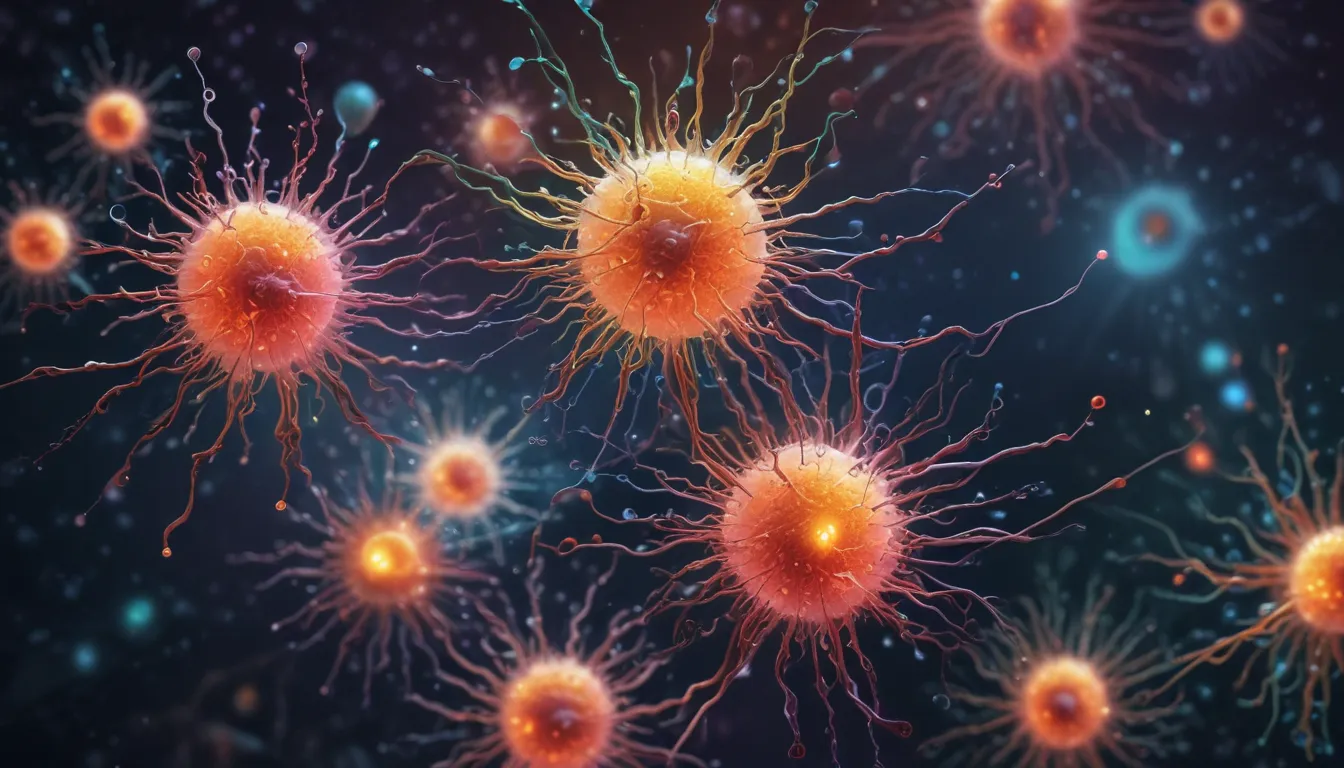A Note About Images: The images used in our articles are for illustration purposes only and may not exactly match the content. They are meant to engage readers, but the text should be relied upon for accurate information.
Intracellular signaling cascades are intricate networks within cells that enable communication and response to the environment. These cascades are essential for maintaining cellular balance and regulating various processes. From the transmission of signals at the cell surface to the activation of specific genes in the nucleus, intracellular signaling cascades orchestrate a series of complex events. This article delves into 19 fascinating facts about these molecular networks, shedding light on their complexity and significance in cellular biology.
Understanding the Basics of Intracellular Signaling Cascades
Intracellular signaling cascades involve a range of molecular interactions, such as protein-protein interactions, phosphorylation events, and activation of downstream signaling molecules. These cascades play a crucial role in relaying information from the extracellular environment to the inside of the cell, allowing cells to adjust their behavior in response to external cues. G-protein coupled receptors (GPCRs) and protein kinases are key components of these cascades, triggering downstream signaling pathways upon receiving specific signals.
The Intricacies of Signaling Cascades
Signaling cascades can be initiated by various stimuli, including growth factors, hormones, neurotransmitters, and environmental cues. Second messengers like cyclic AMP and calcium ions amplify and transmit signals to downstream components of the cascade. The MAPK/ERK pathway, a well-known signaling cascade, regulates cell proliferation, differentiation, and responses to external stimuli. These cascades are highly regulated to maintain cellular homeostasis through positive and negative feedback mechanisms.
Key Features of Intracellular Signaling Cascades
Signal amplification is a critical feature of these cascades, allowing a single signal to activate downstream components efficiently. Receptor desensitization prevents excessive activation of signaling pathways, while dysregulation of these cascades can contribute to various diseases, including cancer, neurological disorders, and metabolic conditions. Intracellular signaling cascades exhibit spatial and temporal dynamics, with regulation of signaling molecules, localization, and activation timing playing crucial roles in cellular responses.
Diving Deeper into Signaling Cascades
Inflammatory signaling cascades are essential for the immune response, coordinating the release of inflammatory mediators in response to pathogens or tissue damage. Cellular apoptosis is regulated by specific signaling molecules and pathways within these cascades. Cross-talk with other cellular processes influences cell cycle progression, DNA repair, and metabolism. Additionally, these cascades exhibit both positive and negative regulatory loops, providing stability and flexibility in cellular responses.
The Therapeutic Potential of Signaling Cascades
Intracellular signaling cascades hold immense therapeutic potential, as targeting specific components can lead to new treatments for various diseases. The plasticity and context-dependent behavior of these cascades allow them to elicit different responses based on cellular context and environmental cues. By understanding these intricate signaling pathways, researchers can uncover new avenues for research and potential therapeutic interventions.
Conclusion
Intracellular signaling cascades are fascinating systems that regulate essential cellular functions and ensure proper communication within cells. By unraveling the mysteries of these signaling cascades, we can gain a deeper understanding of cellular biology and its implications for health and disease. As researchers continue to explore the mechanisms of intracellular signaling cascades, we can anticipate further breakthroughs in cellular communication and potential therapeutic interventions.
FAQs
Q: What is an intracellular signaling cascade?
A: An intracellular signaling cascade refers to a series of molecular events that transmit signals within a cell, allowing it to respond to various stimuli and coordinate its activities.
Q: How do intracellular signaling cascades work?
A: Intracellular signaling cascades involve the activation of specific molecules called signaling proteins, which transmit signals from the cell surface to the nucleus, ultimately leading to the desired cellular response.
Q: Can intracellular signaling cascades malfunction?
A: Yes, malfunctions in intracellular signaling cascades can result in various diseases and disorders, such as cancer, diabetes, and neurological disorders.
Q: What techniques are used to study intracellular signaling cascades?
A: Scientists use various techniques, including biochemical assays, molecular biology techniques, microscopy, and genetic engineering, to study intracellular signaling cascades in detail.
In conclusion, delving into the world of intracellular signaling cascades reveals the intricate mechanisms that govern cellular communication and response. Explore the fascinating world of cell signaling and broaden your understanding of these essential processes that underpin life itself.





